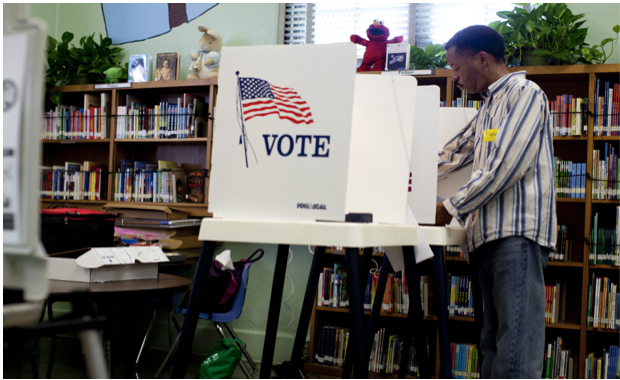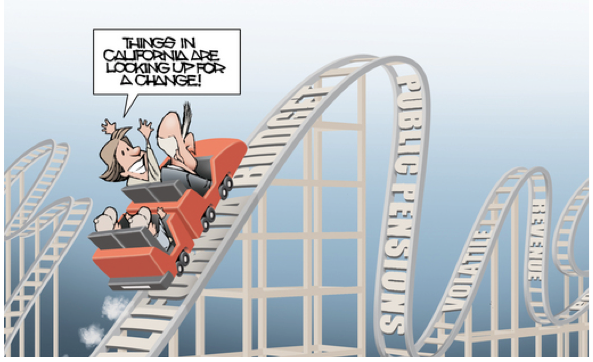EASTSIDER-Thank God May 16 is behind us and the CD 1 runoff is over. Everyone has written about this race ad nauseam, so I won’t say much more, other than the fact that I endorsed Gil Cedillo (you can read it here,) and that in the later phase of the campaign, this race got about as ugly as I’ve ever seen in LA City politics, and that’s ugly indeed. Notwithstanding the huge win for Gil Cedillo (about 70/30) it’s going to take a lot of healing to make this District work together going forward.
About that Congressional District 34 Race
I was going to wait for the EAPD’s Endorsement meeting on May 23 to write about the Congressional District runoff, but someone decided to send out the mail-in ballots for this race during the week of May 8. Thus this article, even as people fill out their mail-in ballots. That seems very early to me, and actually overlapped the runoff elections on May 16.
It also means we will not get to see both Jimmy Gomez and Robert Lee Ahn face-to-face before most of the mailed ballots are in, and I think that sucks. I’m not a political consultant, but I’m sure that Parke Skelton/SG&A has models as to how many mail-in ballots will already be turned in before there is any real forum or opportunity to see both candidates on May 23. This will be a detriment to being able to see both candidates in a robust campaign.
At least in the CD 1 race, we had a number of face-to-face debates which both galvanized voters and told us a lot about our choices. Here we have a much bigger deal, an opening for a House of Representatives seat, with no term limits, in the midst of a crazy time in D.C., and it’s almost like this runoff is under the radar.
A note to self: this campaign season has made me decide to stop using the words “progressive” and “Bernie democrat.” Everyone is running as a progressive this year, whatever their real political colors. Both Gil Cedillo and Joe Bray-Ali ran as progressives, and by now the Democratic National Committee (DNC) is trying to pretend that they are progressive. Heck, if he was still in office, Dennis Zine would probably try to pass himself off as progressive.
Same for who is the true successor to Bernie Sanders. In the wake of the Dems getting creamed by none other than Donald Trump, suddenly the California Democratic Party is all in for Bernie. Happy faces and “The Burton legacy -- Empower the Grassroots, Build for the Future.” Grassroots? Funny how I didn’t see that from the CDP and the Clintonistas last November. And after the post-election Our Revolution staff changes, I’m not too sure who they are anymore and have stopped giving them money. Individual campaigns only.
About Jimmy Gomez and Robert Lee Ahn
Jimmy Gomez should need no introduction to California Democrats. Born in Fullerton, he followed the traditional Democratic establishment path to politics. From AFSCME to the obligatory east coast stint at Harvard and then on to Hilda Solis’ staff, he became the Political Director for the Nurses in California (UNAC) as he positioned himself for office. Not bad creds.
He was elected to the Assembly in 2012, and reelected in 2014, as well as last November 2016. If you have any doubt that he is the establishment candidate in this race, a recent mailer shows Xavier Becerra endorsing Jimmy on one side; the other side reads like a who’s who of every Democratic California official, from federal to state to local. I was going to list them, but then this column would be way too long and no one would read all the names anyway.
Mr. Gomez is handled by Parke Skelton/SG&A Campaigns, our local powerhouse political fixer lobbyist gang. Of course. Glory be to them, and if Jimmy is successful in this race, I’m sure they will handle the (yes another) Special Election that will have to be run to replace him in the legislature.
To his credit, Jimmy is a bright, very engaged and articulate politician who has been extremely successful in the California Legislature, and was rumored to be the likely replacement for Kevin de Leon in the Senate.
On the other side, in this season of uncouth and slimy politics, Robert Lee Ahn is the outsider who allegedly had no chance in a Congressional District carved out for a Latino. Yes, the same 800 pound gorilla as we saw in the CD 1 race.
Yet he beat 21 other candidates to win a seat at the runoff table, and even I was embarrassed to admit that I had never heard of him until the votes were counted in the primary. He is clearly running as the younger, activist, bottom-up small “d” democratic candidate who could shake up the Democratic Party Establishment.
As far as I know, there are no public debates planned between Jimmy Gomez and Robert Lee Ahn, other than the endorsement meeting of the East Area Progressive Democrats on May 23. I think that this indicates a deliberate strategy by Parke Skelton and his gang to avoid any face-to-face debates between the two candidates. Bury the challenger in targeted mailers casting aspersions on his character, and rely on the big bucks and establishment endorsers to bring home the bacon.
Witness a mailer I received last week, basically accusing Ahn of being a “closet Republican” trying to secretly galvanize republicans to vote for him, while Jimmy Gomez is the paragon of being “a champion for progressive democratic values.” This is silly -- there aren’t more than a handful of republicans in the district, and you can see from these mailers why I won’t use the “progressive” tag anymore. Everyone Parke Skelton represents is evidently progressively poorer from paying SG&A their fees, I suspect.
Meet Robert Lee Ahn
After my article pushing back against an LA Times piece with the spiffy title of LA voters “didn’t just turn their backs on Berniecrat progressivism, they went positively Clintonesque,” some of my fellow Dems let me know that Robert Lee Ahn might not be as big a Bernie progressive as I had been led to believe. Another reason I am trying to avoid the use of “progressive” and “Bernie dem.”
So I recently went to a local meet and greet in Highland Park for Ahn. He directly took on the rap about being a Republican. His answer was that a lot of immigrants from his parents’ generation who had small businesses became republicans because that’s what business people did, and at that time, politics was not the kind of a life or death game that it has recently turned into. So he went along with his parents, like a lot of other people.
At the same time, his father founded a non-profit group called PAVA (Pacific American Volunteer Association) which got involved in the LA River, Friends of the LA River, and even actual homeless people with the LA Mission. Mr. Ahn became seriously involved in these efforts, ultimately leading him to become a democrat as his activism increased. Hardly the picture of a conservative republican who simply registered as a democrat in 2012 to run for office.
I believe this is a credible response. Over the years, I’ve talked to a lot of folks from Lincoln Heights, Boyle Heights, El Soreno, and Highland Park whose parents were Latino (or other) immigrants, had small businesses, and were republicans. Ahn shouldn’t be tarred with the same brush as Joe Bray-Ali has been in the CD 1 donnybrook. And as the candidate quipped, “Elizabeth Warren was once a republican too, and look at her now.”
As a native Angeleno from the District, Ahn keys on the fact that CD 34 is of one of the poorest Districts in California, and something needs to be done about it. After the meeting I did a fact check, and he’s right. Outside of the San Joaquin Valley, CD 34 is right in there at the economic bottom, with over 25% of our residents living in poverty.
To me, that’s the kind of thing that a native Angeleno raised locally would know, whereas other professional politicians might not really be aware of it -- or would choose to downplay this reality. Remember, aside from all the newspaper headlines about Washington, congressional members get paid to represent the troops in their district.
The Takeaway
Lest you think that I’m simply gushing over Robert Lee Ahn, let me assure you that I’m not. I’m not endorsing anyone. What I am saying is that if you can, delay sending in that mail-in ballot until you find out more about both candidates as legitimate contenders for the job. I just think we deserve a competitive race instead of a coronation.
Ignore the hit pieces and check out both candidates before you cast your ballot. Obviously I recommend the East Area Progressive Dems meeting on May 23 at the Goodwill Center on San Fernando Road. I am assured that there will be at least a 15-minute or so debate between the candidates before the endorsement vote. Also, Maria Elena Durazo will be making an appearance in her run for California Senate.
If you can, attend an event for each, or both, candidates. This is likely to be a super low turnout election, and yet it will have a serious impact on the House of Representatives and California for decades to come. We owe it to ourselves to check out our candidates rather than relying on the same old same old system that produced republican majorities in both the House and Senate.
Your vote is important. The May 16 election had something like an 8 1/2% turnout citywide, which is pitiful, and shame on us. It also means that each and every vote counts big time. With over 61% of the ballots being cast by mail, it is all too easy to fill out a ballot without paying much attention to the candidates. You are important! Check out the candidates and the issues, and pretty please, VOTE!
(Tony Butka is an Eastside community activist, who has served on a neighborhood council, has a background in government and is a contributor to CityWatch.) Edited for CityWatch by Linda Abrams.
-cw



































